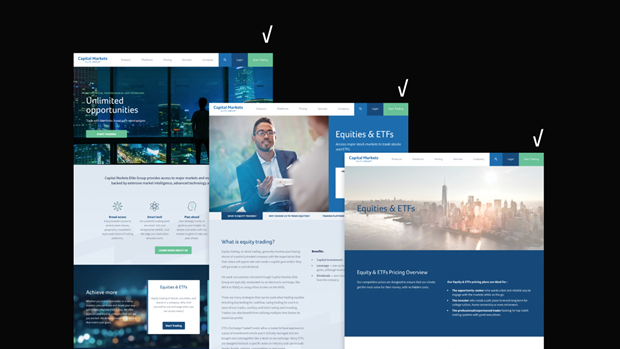Making a thorough Quality Assurance (QA) plan in the early stages of your development cycle can help deliver the best possible experience to your end users. It's also a fundamental first step that can yield remarkable results for your business, particularly in terms of conversion and customer satisfaction.
Learn more
When developing a QA plan, the audience must always be front and center. Your QA must be anchored on meeting user needs, as well as industry standards, to make sure you’re on the right track from start to finish.
Of course, the purpose of QA is to ensure that your digital product performs at its best, in all aspects—from branding and function to usability and design—and is capable of delivering a meaningful (and hassle-free) experience to your audience.
There are many areas that must be looked into when mapping out a plan, including security, accessibility, and design.
Much like any undertaking, a QA plan involves identifying a set of objectives that are both feasible and tailored to the needs of your end users. Matching your goals with your target audience is a good calibration technique in your planning stage. Setting key performance indicators (KPIs) that are measurable, realistic, and valuable can also be helpful in keeping the company on target.

Aside from setting goals, part of QA planning involves tabulating areas to examine. These include modules like fill-up forms, call-to-action (CTA) buttons, pop-up messages, audio-visual elements, and live chat, among others. The QA checklist also includes links to web pages within and outside the domain, as well as social links. These are crucial components that must be laid out in the planning stage. Apart from this, make sure you don’t leave out important components when doing QA, like plug-ins, so that you can test at your website’s optimal level.
Moreover, QA planning is more than just identifying key areas for evaluation. It’s also about mapping out strategies for identifying and resolving issues prior to launch. This can be done by mounting your website on staging platforms, which buysyou time to make necessary adjustments until you’re ready for the big reveal. By putting your site in a more controlled environment, you can already resolve possible flaws, a process that can be more costly when done on launched websites. Staging is often done by large-scale enterprises that don’t want to run the risk of rolling out problematic websites and spending more on unexpected reworkings.
Another strategy used in QA testing is forced-error testing. This can be done by collating a list of error conditions, oftentimes from developers, and putting each one under testing. There are some issues that pop up during the testing process as well. Forced-error testing helps discover errors undetected or improperly recognized by your platform. This helps you build a better experience for your users and improve any issues that might get in the way of an excellent user experience (UX).
Ultimately, sketching out a QA plan will help you eliminate additional cost, time, and resources in fixing potential issues that might arise once your website is live on the World Wide Web.
Learn more



